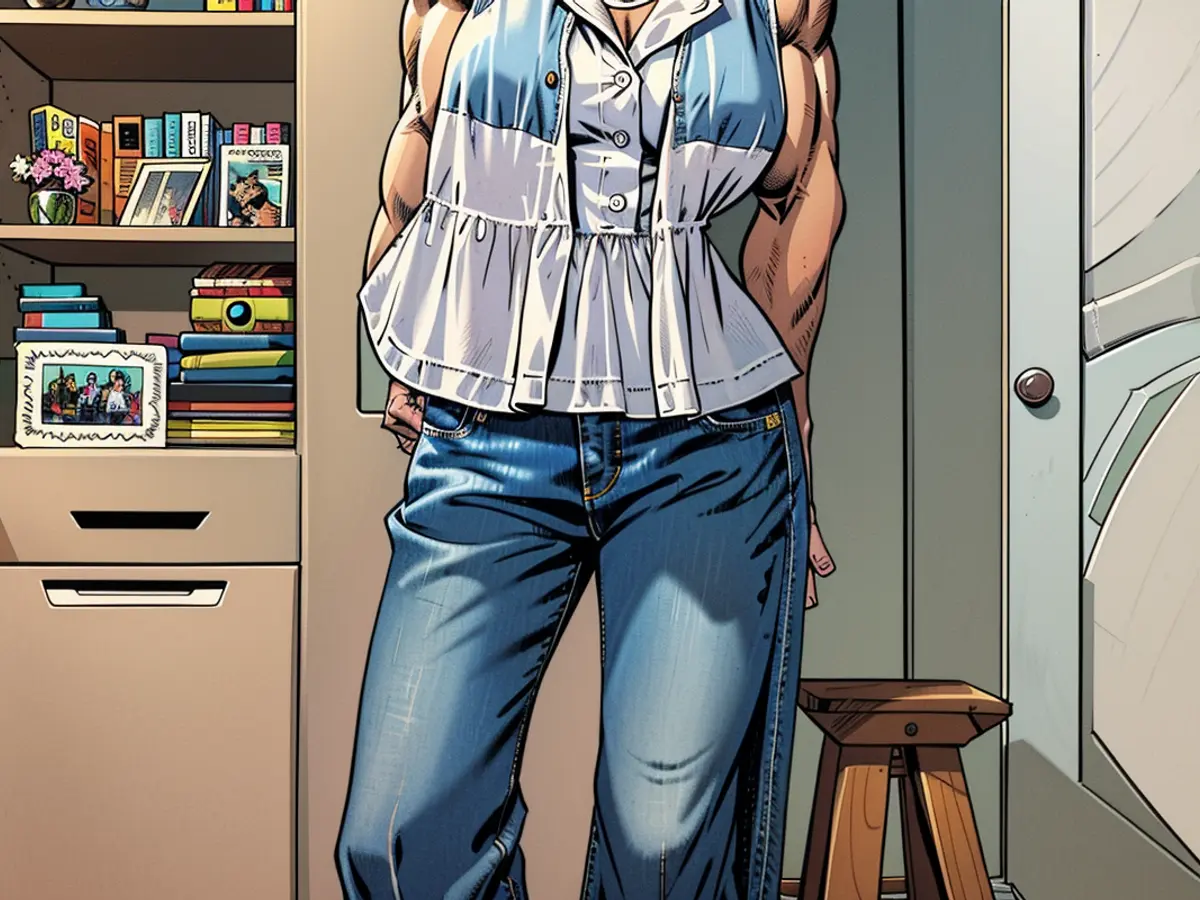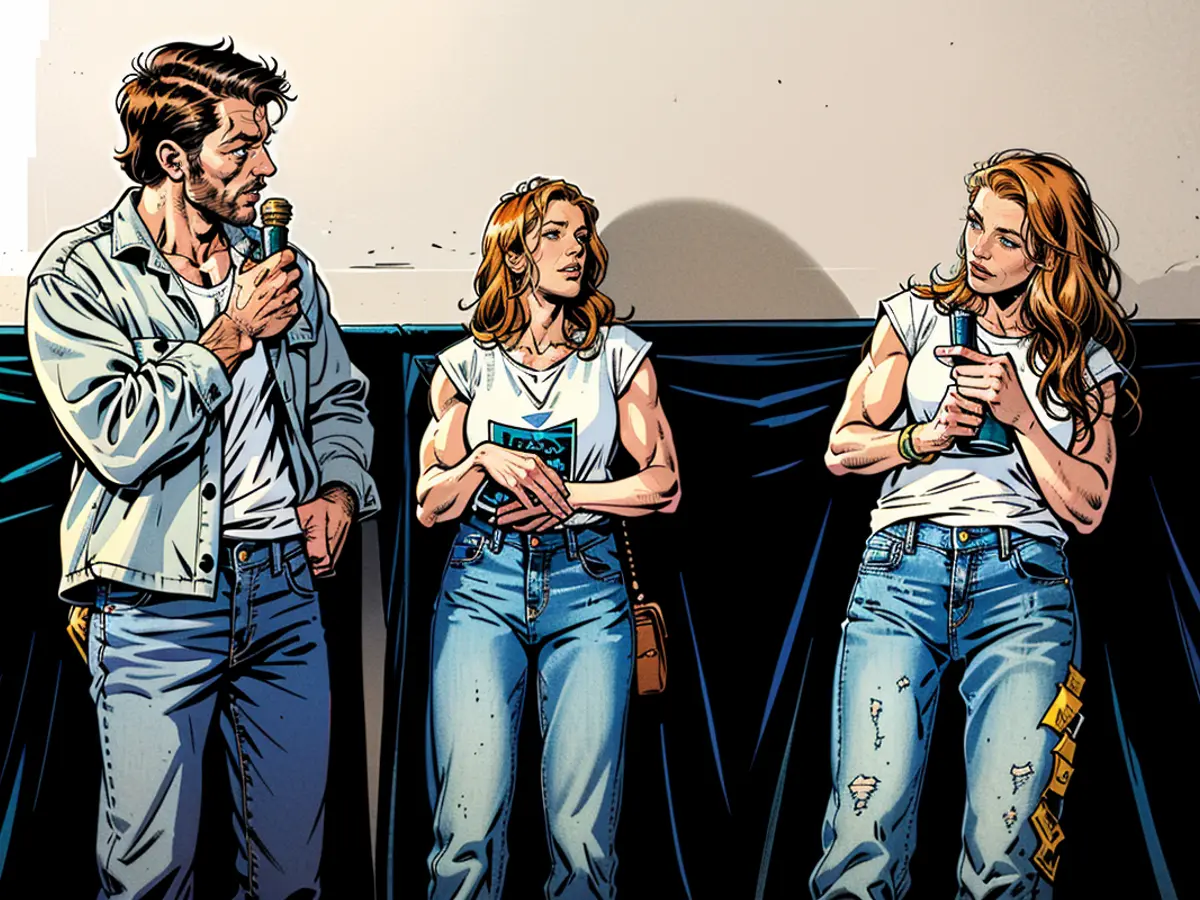Blake Lively recently donned a $19,000 worth of denim pieces. What constitutes an excessive expenditure on a pair of jeans?
Showcasing calf-to-ankle slits and bloom-shaped embellishments, the denim trousers from Italian fashion house Valentino, were coupled with a basic white top, Christian Louboutin pumps, drop hoop earrings and Lively's natural wavy hair. These jeans are somewhat exceptional, having been designed — undeniably — with celebrities and the affluent elite in mind. They are a topic of conversation; they are about dreams, they are not for your school pick-up.
On fashion retail websites such as Net-a-Porter and Ssense, the most expensive jeans listed are hardly as extravagant, with peak costs largely within the $2,500 to $3,500 range for brands including Jean Paul Gaultier, Dolce & Gabbana and Ralph Lauren. On Valentino’s own site at the time, the subsequent most expensive pair was priced at $2,700 (reduced from $4,500). Despite this, it's still a considerably large sum for most people.
More affordable alternatives are abundant across the market — from traditional $100 Levi’s to contemporary denim brands, such as MUD Jeans or ELV Denim, highlighting their environmentally friendly or circular characteristics (jeans in this category typically range between $200 to $500.)
So, perhaps the actual question is: With such a wide selection in prices, and so many options, how should you choose which jeans are right for you? And what are you genuinely getting for your money?
A brief consumer guide
Shopping for a new pair of jeans can be a daunting task and — from the type of cut to the wash of the denim — there are numerous aspects to contemplate beyond price.
For stylist Becky Malinksy, it's crucial to know your intended use for the jeans: “are they for work, or for spending time with your kids, or for going out to dinner,” she explained during a phone interview.
A basic Google search presents an overwhelming number of brands and styles to select from. Malinsky, who also creates the well-liked “5 Things You Should Buy” newsletter, focuses on a few “noteworthy” denim brands to observe their innovations in shape, silhouette and color. From there, “consider where your body type fits into some of these trends,” she suggested.
“I often look to brands like Citizens of Humanity — I believe they excel at both style and fit. I'm a faithful Levi’s wearer, and I recommend it to clients frequently. I think the price is appropriate. I also explore what the designers are producing...The Row is extremely prolific in denim now,” she shared.
When shopping, don't just try the jeans on — stand, walk and sit in them. Comfort is essential if you intend to wear your new purchase frequently.
Malinksy also emphasized the importance of striking a balance between style and comfort. Generally, more stretch results in higher levels of comfort, but excessive stretch may compromise shape.
“For someone who still desires a bit of stretch in their jeans, I always suggest selecting a straight leg jean or something wider. This allows for comfort in your waist area...but it won't stretch out like a jegging,” she suggested.
You may also want to consider sizing up and having the jeans tailored to your specific body shape. Whether you're tall and slim, or short and curvy, finding a skilled tailor can be essential when ensuring any piece of clothing perfectly fits you.
If you're curious about evaluating the quality of a denim piece, Malinsky stressed the significance of “touch feel.” “Anything that's too soft, such that it feels like you're almost touching a T-shirt, is not going to hold up. You should look for something that has a bit of resistance to your hand,” she shared.

If you're shopping for men's jeans, Malinksy advised against the “feigned worn” appearance, instead advocating for a clean and classic cut in a darker wash. She recommended Sid Marshall as a promising choice in the men's clothing category.
Summing up, if you're looking for a pair that will withstand the test of time (as we all should if we wish to be more thoughtful, sustainable consumers), avoid excessive styling such as impossibly skinny or extraordinarily wide legs, rips and embellishments. A straight- or slightly tapered-leg, mid-to-high-rise jean in a mid- or slightly darker-toned wash will never go out of style.
The case for investing (somewhat) more
While there's no suggestion you should forgo a down payment on your first house for a pair of jeans, there is an argument for investing a bit more.
“It requires a considerable amount of resources, and numerous hands, to create a pair of jeans,” said Sandra Capponi, co-founder of the sustainable fashion site Good on You. “So if we're buying denim at extremely low prices, then someone or something is paying the price.
“And when you consider the cost per wear, investing money upfront in high-quality items you'll wear repeatedly is often the best choice for your wallet, and for the environment,” she concluded.
The Good on You website includes a directory of brands, categorized by price and ethical credentials. The site currently features 21 “Excellent” denim brands (the highest rank, which goes from “Excellent” down to “We avoid.”)
"Wow, the diversity in denim is astonishing," commented Ani Wells, a representative from the denim monitoring group Transformers Foundation, during a Zoom call. "You can get a pair for as little as $20, but you can also splurge on a set that costs $20,000. Considering the $20 jeans, it's safe to assume that the labor involved wasn't up to our usual standards, considering all the hands that handled those jeans. It's reasonable to suppose that workers aren't being fairly compensated, and the materials used are likely cheap to keep the price low.
In Wells' opinion, the ideal price range for jeans is between $100 and $400. "I genuinely think there are numerous eco-friendly brands out there producing excellent jeans for around $150 to $200," she shared. "However, when you surpass the $400 mark, I believe you're mainly paying for the branding."
Malinksy generally concurred with this viewpoint, while also cautioning about the manufacturing process of incredibly cheap denim.
As a consumer, it's perfectly fine to invest in premium brands if you have the means, or if you're in a splurge mode. "For some individuals, the high price of designer denim is justified if they'll be frequently wearing that jean and it forms the basis of their outfit," noted Malinksy.
In the end, there's no price tag on your perfect denim pair – the one you wear multiple times a week and always makes you feel fantastic. So, keep in mind while shopping, question the affordability of items under $100, try on everything, and don't concern yourself with what others are spending.
Nevertheless, if doubting the $19,000 denim still leaves you in awe, recall that last year, a pair of Kurt Cobain's worn-out Levi's was sold for over $400,000.

In the world of high-end fashion, Valentino's denim trousers with their distinctive calf-to-ankle slits and bloom-shaped embellishments are often associated with fashion and style. When curating a stylish outfit, pairs from 'noteworthy' denim brands like Citizens of Humanity or Levi's can offer a balance between style and comfort.
While visiting various fashion websites to explore various options, one might find that more expensive jeans from brands like Jean Paul Gaultier, Dolce & Gabbana, or Ralph Lauren might not necessarily be as extravagant as they seem, with peak costs mostly within the $2,500 to $3,500 range. By sensibly investing in high-quality denim items that you will wear frequently, you are not only helping your wallet but also minimizing your environmental impact.








